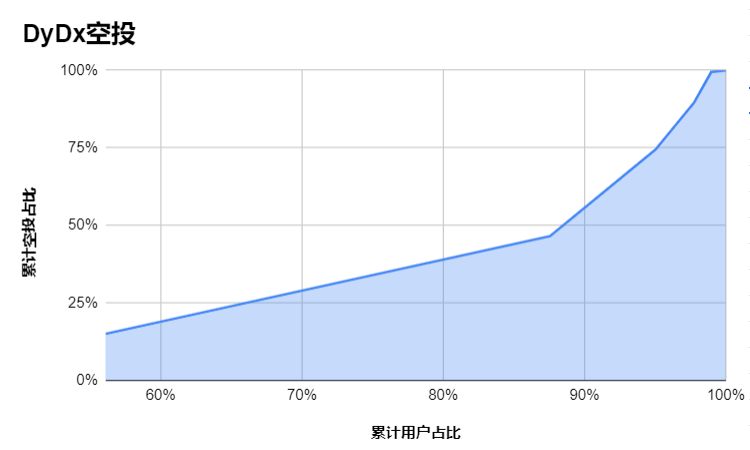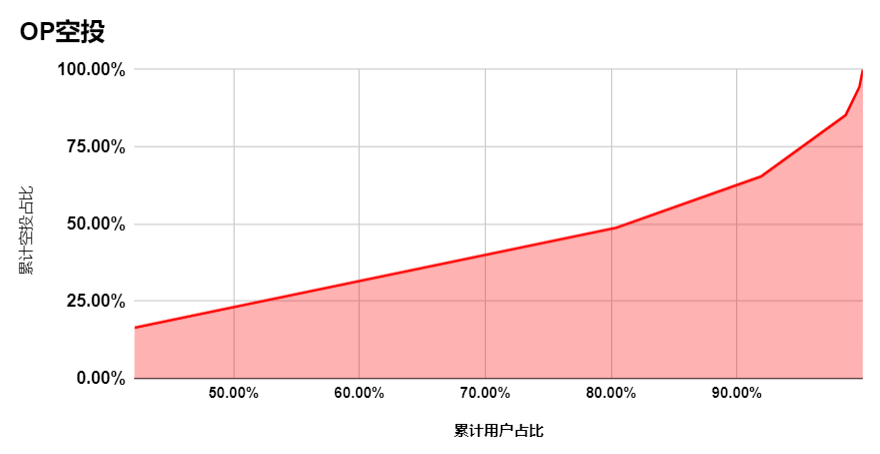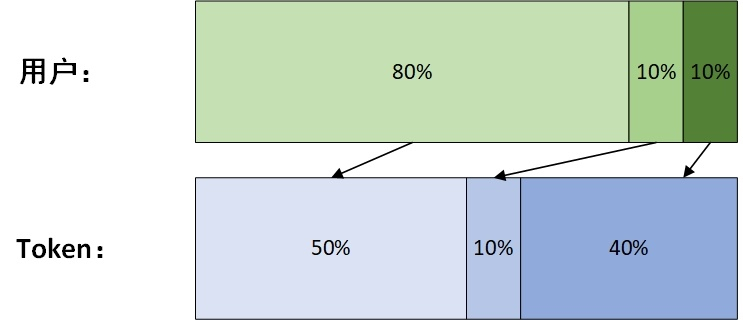first level title
Original editor: Evelyn, W3.Hitchhiker

Airdrop logic
Before the currency is issued, the airdrop is the bargaining chip for the project party to attract users. When the currency is issued, it is a "free" marketing created by the project party. Judging from the current inaccurate statistics of the small number of samples, generous project parties often have a strong background in their own strength, and the price of tokens after the airdrop often has a good performance. However, the price of tokens after airdrops by stingy project parties is often unsatisfactory.
The rules of airdrops have gradually changed from the initial one-size-fits-all to a large-scale airdrop distribution method. For the project side, all user activities can be regarded as a tag, but among so many tags, only those users with rare tags can get high airdrops. The issue price of tokens listed and the proportion of total tokens to be issued are determined in advance by the project side. The project side sets various rules to screen potential airdrop users and divides the corresponding airdrop "levels" to go to Fill up the total airdrop quota. All behaviors of users are just labels for classifying users, and the higher the class, the greater the airdrop quota.
For users, choice is more important than effort. Generally speaking, the greater the potential of the track where the project is located, the more financing, and the greater the prospect, the easier it is for them to make money, and the greater the cash flow. Therefore, the probability of the project issuing large airdrops is also higher. big. If the user conducts rarer interactions on this basis, it is more likely to receive a higher amount of token airdrop distribution.
Enlightenment seen from several typical airdrops
ENS airdrop
First of all, the ENS domain name itself is an NFT with a validity period. The domain name NFT has three attributes: registration time, remaining expiration time and whether to reverse resolve. The airdrop of ENS sets a set of airdrop calculation formulas based on these three attributes. In general, the number of short positions obtained by users = (number of ENS domain name holding days × 0.27 + remaining days to expiration × 0.067) × reverse resolution coefficient (if there is no The weight of reverse analysis is 1, then the weight of reverse analysis is 2). According to the Dune data, the users who have received the ENS airdrop are sorted out. The data shows the cumulative user proportion and the cumulative token proportion, which generally presents an exponential function image.

dYdX Airdrop
As a contract DEX, dYdX's airdrop method is mainly divided according to the number of transactions of users. Total number of users who received airdrops: 64540. dYdX divides users into 6 tiers by transaction amount. The lower the user level, the larger the proportion of people at this level, and the smaller the proportion of airdrops obtained.

OP Airdrop
As an L2 (public chain), OP has set 6 conditions for its airdrop method. The more conditions are met, the greater the number of airdrops obtained. Its conditions include:
OP users: use OP at least twice and the interval between two transactions is greater than 24 hours
Repeat user: used OP in 4 different weeks【TOP 20%】
DAO Voter: Participate in DAO governance voting
Multi-sig signers: multi-money users
Gitcoin Donors (L1): Users who have donated on the mainnet
User Priced out of Ethereum

According to OP's information, there are only 2707 users who meet 4 conditions at the same time, only 627 users who meet 5 conditions at the same time, and only 45 users who meet 6 conditions at the same time. Judging from the issuance of token airdrops, OP officially gave most users a minimum living allowance, and also gave high rewards to deeply participating users. The gap in the number of airdrops between users with different levels of participation is very large, and the gap is generally exponential.
Lessons learned from ENS, DyDx and OP airdrops
Among these three typical large short positions, each of these projects has obvious bright spots:
ENS makes money very easily, with almost no cost and no competitors.
OP and dYdX have very rich financing, a relatively leading position in the industry and broad market prospects.
It is with these bright spots as the confidence that we can distribute large airdrops to a large number of user groups.
Judging from the distribution of airdrops, we can see a potential rule, that is, the number of token airdrops between user groups shows an exponential difference (compared with the above three graphs is more intuitive)
Start reward: rank 0% — 80% of the users will allocate about 50% of the total tokens
Intermediate reward: rank 80% — 90% of the users will allocate about 10% of the total tokens
The highest reward: TOP 10% users will allocate about 40% of the total tokens

The author also investigated several other projects, and they all showed the same pattern. For the project side:
Distributing the starter reward to the widest user group is the most direct feedback to these users, and it is also the marketing fee paid by the project to the community.
Distributing intermediate rewards to a small group of users in the middle is the project party's response to the support of these backbone forces.
Distributing the highest reward to the TOP 10% users is the project's gratitude and tribute to these deep users.
From the point of view of airdrops, the airdrop rewards obtained by upgrading one's account by one level will be multiplied several times. For ordinary users, the return of airdrops for a high-quality account will be much higher than that of many accounts with average participation.
Thoughts on future airdrops
The airdrops in the future must be more and more popular, and more and more users will participate in the competition for starting rewards. The more wolves and less meat, the more the share of each user will be diluted. If users want to obtain higher-level airdrop rewards, they need to have a more scarce "footprint on the chain", to achieve what others have and what others have, and strive to make their addresses become TOP 10% or TOP 20%. The condition for the project party to filter the airdrop level must be based on the rarity, and the purpose of the screening is also to "classify" the users. These scarcity conditions can be a sufficient number of transactions, transaction amount or transaction time interval (this enough is a relative concept, such as achieving TOP 10% of the crowd); it can also be a certain NFT (including OAT or POAP), based on the future The frequency and weight of airdrop distribution of NFT, OAT and POAP will definitely increase and increase. The role in Discord does not seem to be very useful for airdrops at present.
Summarize
Summarize
1. Determine whether the project has, or has the opportunity to have in the future (including but not limited to):
large amount of financing
broad track outlook
Lying down to make money
very leading market position
2. Judging which behaviors have obvious distinction and scarcity (including but not limited to):
Rare and limited NFT (OAT, POAP) of the project party
Gitcoin donation
large enough interaction amount
large enough number of interactions
The characteristics brought by the product characteristics of the project itself
Fully experience all the functions of the project
3. Most importantly:
Constantly explore, experience Dapp, stay curious, and persevere.
Don't be anxious because of other people's airdrops to get rich
Original link